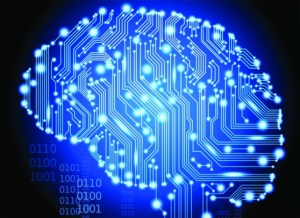 Research firm Forrester understands that everyone who’s been listening with even one ear knows that mobile, social, cloud, and data are big freight trains of change that are crashing through old business models and old business practices.
Research firm Forrester understands that everyone who’s been listening with even one ear knows that mobile, social, cloud, and data are big freight trains of change that are crashing through old business models and old business practices.
But let’s face it: That train is in the station. What’s next?
Also see: Forrester’s top 10 mobile trends for 2013
Analyst Bryan Hopkins gave us a peek into what Forrester thinks is next, and much of it builds on those four horseman of disruptive change. “We went a level deeper in our research by examining how today’s hot technolog[ies] create platforms for future disruption,” he wrote this morning in a blog post.
Here they are, in four groups:
End user computing technologies
- Next-generation devices and UIs
New sensors and new user interfaces. Think Leap Motion - Advanced collaboration and communication
Think social inside, like Yammer or other social-inside-the-enterprise solutions - Systems of engagement
Real-time data, in everyone’s hands. Think Roambi
Sensors and remote computing technologies
- Smart products
Thing that can sense, react, and communicate. Think operating system for places and buildings - In-location positioning
GPS and in-building location sensors - Machine-to-machine networks
Background intelligence on people and things. Think ReelyActive
Process data management technologies
- Smart process applications and semantics
 Real business processes are a lot messier than your flow charts. Smart process apps know that.
Real business processes are a lot messier than your flow charts. Smart process apps know that. - Advanced analytics
Smarter, more predictive data. Think Cloudera’s Impala tool for Hadoop - Pervasive BI
People need business intelligence that comes every hour, not at the end of the month - Process and data cloud services
Scalable, burstable, and cheap computing capability. PaaS, BaaS, etc.
Infrastructure and application platforms
- Big data platforms
Infrastructure to handle big data and high speed … and use all that data you’ve been uselessly storing - Breakthrough storage and compute
Yes, hardware may still be necessary, even if you’re never going to be like Google - Software-defined infrastructure
Software that dynamically routes your networking and data center capabilities - Cloud application frameworks
Technologies for deploying and running distributed apps in the cloud, like, perhaps, a multi-continent-spanning database - New identity and trust models
New federated trust and identity models for a changing world of jobs and careers … and maybe even killing all usernames and passwords
An interesting thought for executives:
If you want a good look at the future of end user computing technologies and sensor and remote computing devices, check winning Kickstarter and IndieGoGo campaigns in the technology and gadget categories. And for a picture of the future for the last two groups above, process data management and infrastructure and application platforms, look at Google and Facebook.
photo credit: ginnerobot via photopin cc

